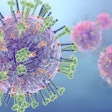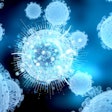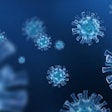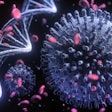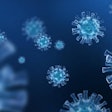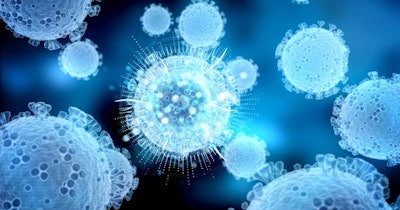
Key differences in how the nasal cells of young and elderly people respond to the SARS-CoV-2 virus may explain why children typically experience milder symptoms of COVID-19, say researchers.
They say that understanding how the type of nasal cells people have change with age and how this affects the ability to combat SARS-CoV-2 infection could be crucial in developing effective antiviral treatments, especially for older people who are at higher risk of severe COVID-19.
A study published in Nature Microbiology focused on the early effects of SARS-CoV-2 infection on the cells first targeted by the viruses, called human nasal epithelial cells (NECs).
The study was funded by UK Research and Innovation, the National Institute for Health and Care Research, Great Ormond Street Hospital Biomedical Research Centre, Wellcome, and the Chan Zuckerberg Foundation.
“By carrying out SARS-CoV-2 infections of epithelial cells in vitro and studying the responses with single cell sequencing, we get a much more detailed understanding of the viral infection kinetics and see big differences in the innate immune response between cell types,” said co-senior author, Dr Kerstin Meyer from the Wellcome Sanger Institute.
Children infected with SARS-CoV-2 rarely progress to respiratory failure, but the risk of mortality in infected people over the age of 85 remains high, despite vaccination and improved treatment options.
Researchers say their findings underscore the importance of considering age as a critical factor in both research and treatment of infectious diseases.
Participants were recruited for the study from five large hospital sites in London. Cells were donated by healthy participants including children under the age of 11, adults ages 30 to 50, and, for the first time, adults over 70.
The cells were then cultured using specialized techniques, allowing them to regrow into the different types of cells originally found in the nose. Using single-cell RNA sequencing to identify the unique genetic networks and functions of thousands of individual cells, researchers identified 24 distinct epithelial cell types. Cultures from each age group were then either mock-infected or infected with SARS-CoV-2.
After three days the NECs of children responded quickly to SARS-CoV-2 by increasing interferon, the body’s first line of antiviral defense, restricting viral replication. However, this early antiviral effect became less pronounced with age.
In the study, NECs from elderly individuals not only produced more infectious virus particles but also experienced increased cell shedding and damage.
Researchers say the strong antiviral response in the NECs of children could explain why younger people typically experience milder symptoms. In contrast, the increased damage and higher viral replication found in NECs from elderly individuals could be linked to the greater severity of the disease observed in older adults.
“These findings provide insights into age-related COVID-19 pathogenesis and demonstrate how impaired repair processes enhance SARS-CoV-2 infection in older individuals,” the authors wrote.
Co-senior author Dr. Marko Nikolic, of University College London’s Division of Medicine, said, “It is fascinating that when we take away immune cells from nasal samples, and are only left with nasal epithelial cells grown in a dish, we are still able to identify age-specific differences in our body’s response to the SARS-CoV-2 between the young and elderly to explain why children are generally protected from severe COVID-19.”
Researchers now hope to investigate the long-term implications of the cellular changes and test therapeutic interventions using their cell culture model.
They suggest that future research should consider how aging impacts the body’s response to other viral infections.











